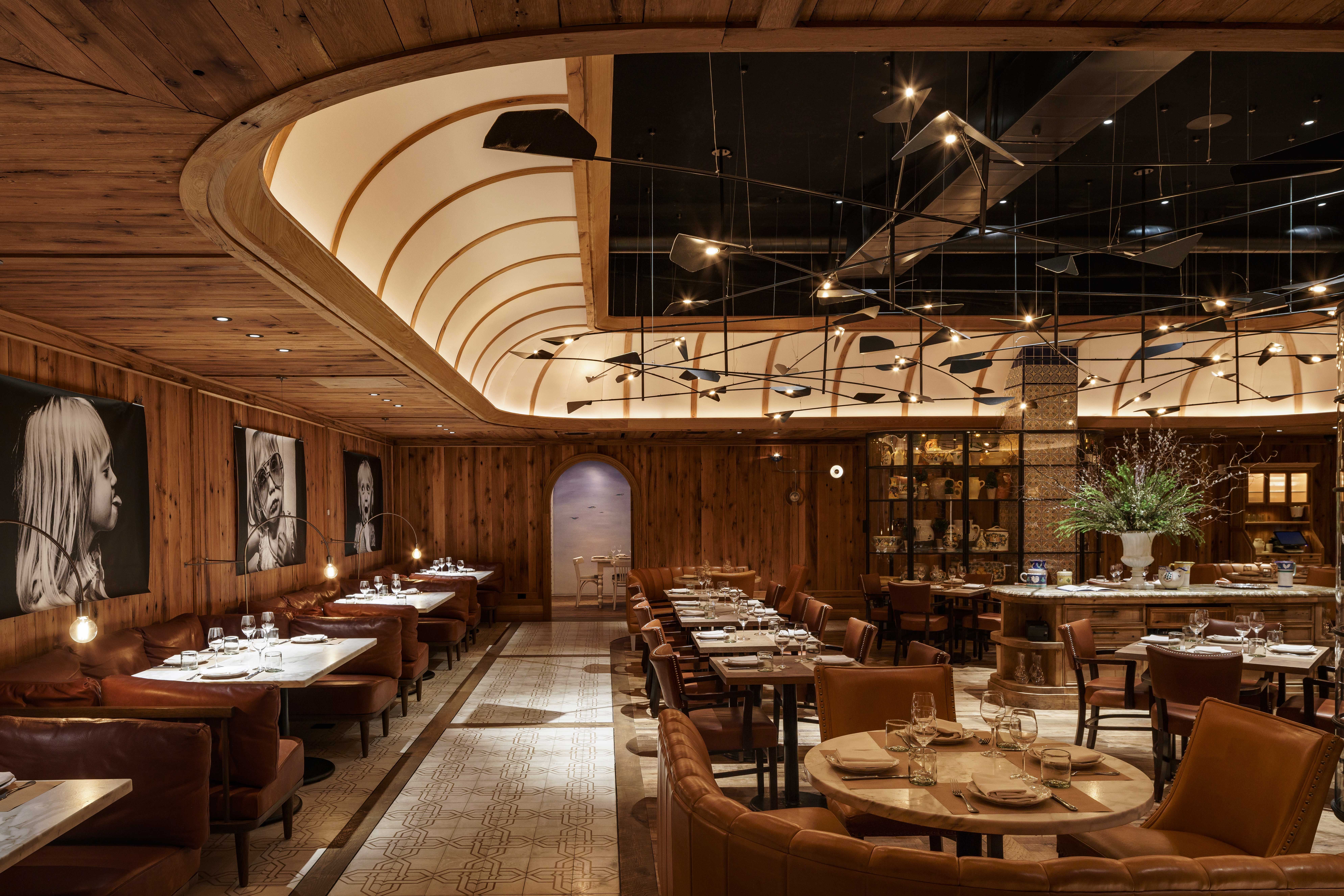Interior Design Trends for Restaurants

Restaurant interior designers – In the ever-evolving landscape of the restaurant industry, interior design plays a crucial role in attracting customers, creating a memorable dining experience, and reflecting the establishment’s brand identity. Here are some of the latest trends shaping restaurant interior design:
Color Schemes and Lighting Techniques:
- Earthy Tones: Warm, natural hues such as beige, brown, and green create a cozy and inviting atmosphere.
- Bold Colors: Restaurants are embracing bolder color palettes, using vibrant shades of blue, yellow, and orange to make a statement.
- Dimmable Lighting: Adjustable lighting allows restaurants to create different ambiances throughout the day, from bright and airy during lunch to intimate and romantic in the evening.
Furniture Styles and Materials:
Restaurant interior designers are always looking for new ways to create unique and inviting spaces. One of the latest trends is to use car wallpaper hd. This type of wallpaper can create a dramatic and sophisticated look, and it can also be used to create a variety of different themes.
For example, a restaurant that specializes in Italian food might use wallpaper featuring images of classic Italian cars, while a restaurant that specializes in American food might use wallpaper featuring images of vintage American cars. No matter what the theme, car wallpaper hd is a great way to add personality and style to any restaurant.
- Comfortable Seating: Upholstered booths and plush chairs provide a comfortable and inviting dining experience.
- Natural Materials: Wood, stone, and leather are popular choices for furniture and decor, adding a touch of warmth and sophistication.
- Mixed Materials: Designers are experimenting with combining different materials, such as metal and wood, to create unique and visually interesting spaces.
Use of Technology and Digital Signage:
Restaurant interior designers are responsible for creating the look and feel of a restaurant, from the layout of the space to the choice of furniture and décor. If you’re looking for the best interior designers near me, you can find a list of them here: best interior designers near me.
These designers have experience in creating beautiful and functional restaurant interiors that will help you attract customers and create a memorable dining experience.
- Interactive Menus: Tablets and QR codes allow customers to access menus digitally, providing convenience and reducing wait times.
- Digital Signage: Screens are used to display menu items, promotions, and other information, creating a dynamic and engaging dining experience.
- Automated Ordering: Some restaurants are implementing self-ordering kiosks and mobile apps, streamlining the ordering process and improving efficiency.
Creating a Cohesive Restaurant Design

A cohesive restaurant design is essential for creating a memorable and immersive dining experience. It involves integrating every aspect of the restaurant, from the menu and food presentation to the decor and ambiance, to reflect the restaurant’s brand and concept.
Integrating the Menu and Food Presentation into the Design
The menu and food presentation play a crucial role in shaping the overall dining experience. The menu should be designed to complement the restaurant’s concept and ambiance, using fonts, colors, and imagery that evoke the desired atmosphere. The food presentation should also align with the restaurant’s brand, showcasing dishes in a visually appealing and consistent manner that enhances the dining experience.
Using Design Elements to Create a Desired Atmosphere, Restaurant interior designers
Design elements such as lighting, furniture, and color schemes can be used to create a specific atmosphere in the restaurant. For example, warm lighting, comfortable seating, and soft colors can create a cozy and inviting ambiance, while bright lighting, sleek furniture, and bold colors can evoke a more energetic and vibrant atmosphere.
Incorporating Branding and Signage Seamlessly
The restaurant’s branding should be seamlessly incorporated into the design, from the logo and color scheme to the signage and uniforms. The branding should be consistent throughout the restaurant, reinforcing the restaurant’s identity and creating a sense of unity.
Designing for Functionality and Efficiency: Restaurant Interior Designers
.jpg)
In designing restaurant interiors, functionality and efficiency are crucial for smooth operations and customer satisfaction. By optimizing space utilization, ensuring proper traffic flow, and creating efficient kitchen and dining areas, restaurateurs can enhance the overall experience for both patrons and staff.
Optimizing Space Utilization
- Use space-saving furniture, such as stackable chairs and modular tables, to accommodate varying guest counts.
- Utilize vertical space with shelves, mezzanine levels, or wall-mounted storage to increase storage capacity without encroaching on floor space.
- Create multi-functional spaces, such as a bar that doubles as a dining area, to maximize space usage.
Ensuring Proper Traffic Flow
Clear pathways are essential for smooth movement of staff and customers. Consider the following:
- Design a clear path from the entrance to the dining area, avoiding obstacles or bottlenecks.
- Provide ample space between tables to allow for easy navigation and unobstructed service.
- Locate the kitchen and service areas in strategic positions to minimize congestion in the dining area.
Creating Efficient Kitchen and Dining Areas
A well-organized kitchen and dining area enhance productivity and efficiency:
- Plan the kitchen layout for maximum efficiency, with work stations arranged in a logical sequence.
- Provide ample storage and work surfaces to accommodate kitchen equipment and supplies.
- Design the dining area to minimize noise levels and create a comfortable atmosphere.